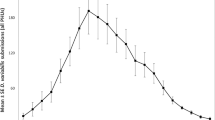Abstract
Progress in the Caribbean Amblyomma Program (CAP) is reviewed since its inception in 1995 when regional eradication activities for Amblyomma variegatum ticks were initiated using Bayticol pour-on. Technical achievements in the various islands were slow initially, and showed a wide diversity in attaining eradication targets. St. Kitts, considered as a model program, eliminated the tropical Bont tick (TBT) from most of the island in less than 3 years. However, the elimination of very low numbers of residual adult TBT that persisted in three ‘hot-spots’ took another 3 years. A similar problem was faced in St. Lucia, although the approach there was to cull the wild cattle in the last remaining hot-spot. Both islands were certified as ‘Provisionally free from TBT’ in November 2001. In 2002, Anguilla and Montserrat attained the same status, and Barbados and Dominica also qualify for certification. Certification is based on strict, three-monthly, surveillance criteria: essentially, two successive TBT-free surveillance rounds on a statistically acceptable sample of the livestock population. Within the responsibility of the CAP, three islands remain TBT-infested, Antigua, Nevis, and St. Martin/St. Maarten. Nevis is of concern because it has been operational since late 1995, and appears unable to resolve the problem of treating stray small ruminants. Current funding should be adequate to complete eradication on Nevis and in St. Martin/St. Maarten. The major outstanding challenge is Antigua. In comparison to other islands they have the largest number of livestock, and have much larger populations than originally reported: sheep and goats are 4–5-fold higher, and cattle are 1.35-fold higher. The cost for Bayticol is, therefore, almost double and an additional US$ 1.5 million is required for that commodity alone.
Similar content being viewed by others
References
Corn, J., Barr, N., Theihot, B., Creekmore, R., Garris, G.I. and Nettles, V.F. 1993. The potential role of cattle egrets, Bubulcus ibis (Ciconiformes: Ardeie), in the dissemination of Amblyomma variegatum (Acari: Ixodoidae) in the eastern Caribbean. J. Med. Entomol. 6: 1029-1037.
George, J., Farez, S., Francois, B. and Sebrechts, M.T. 1997. Mid-term Review of the Caribbean Amblyomma Program. Unpublished Report, FAO/IICA/USDA.
Gersabeck, E.F. 1994. The tropical Bont tick in the Western Hemisphere. In: Comprehensive Reports on 'Technical Items Presented to the International Committee, pp. 121-132. O.I.E., Paris.
Lindquist, D.A. 2000. Pest management strategies: area-wide and conventional. In: Area-wide Control of Fruit Flies and Other Insect Pests, K.-H. Tan (ed.), International Atomic Energy Commission, Pulau Penang.
Pegram, R.G., Tatchell, R.J., De Castro, J.J., Chizyuka, H.G.B., Creek, M.J., Moran, M.C. and. Nigarura, G. 1993. Tick control: new concepts. World Anim. Rev. 74/75: 2-11.
Tatchell, R.J. 1992. Ecology in relation to integrated tick management. Insect Sci. Appl. 13: 511-561.
Villet, J. 1994. The Pan-African rinderpest campaign: where communication is the key. World Anim. Rev. 80/81: 53-62.
Wilson, A. 1995. Appropriate strategies for the control or eradication of ticks and tick borne diseases. Ann. NY Acad. Sci. 791: 54-63.
Author information
Authors and Affiliations
Rights and permissions
About this article
Cite this article
Pegram, R.G., Eddy, C. Progress Towards the Eradication of Amblyomma variegatum from the Caribbean. Exp Appl Acarol 28, 273–281 (2002). https://doi.org/10.1023/A:1025375206346
Issue Date:
DOI: https://doi.org/10.1023/A:1025375206346




